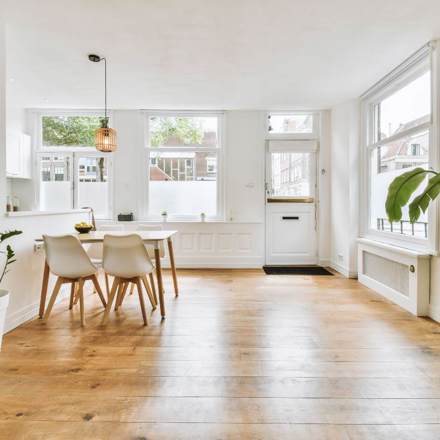BTR is an emerging housing model in New Zealand, specifically designed for long-term rental, rather than ownership. In direct contrast to traditional real estate developments sold on to individual homeowners or investors, BTR properties are retained by institutional investors and are managed professionally in order to provide tenants with high-quality, stable rental housing.
This model has seen considerable success overseas, particularly in markets such as the UK, and is gaining traction in New Zealand as a solution to the country's housing crisis.
The New Zealand Context
New Zealand is currently facing a significant housing shortage, especially in rental stock. The rise of BTR has been viewed as one sure way of solving the problem through the provision of more rental homes where demand is high.
One of the main reasons BTR is taking off in New Zealand is that it has the potential to address two of the biggest challenges facing housing in the country: affordability and availability. Many New Zealanders-particularly Millennials and Gen Z-find it very difficult to access the market due to high property prices. BTR offers a viable alternative: quality homes with long-term security, separate from ownership
Benefits for Investors
For investors, BTR developments offer a secure income stream with lower risks of vacancy compared to traditional rentals. Professional management also frees the owner from most of the day-to-day liabilities in property ownership.
1. Stable, Long-Term Income Stream
One of the key advantages of BTR developments for investors is the potential for a steady and predictable income. Unlike traditional rental properties, which often have higher tenant turnover, BTR developments are designed for long-term tenancy. Lease terms can span up to 10 years, offering investors consistent rental income with fewer vacancies.
For institutional investors or landlords looking for passive income, this stability reduces the risk associated with managing individual properties, where frequent tenant changes or maintenance issues can disrupt cash flow. The professional management that typically oversees these properties ensures a streamlined rental process, minimising the chances of arrears or missed payments.
2. Lower Vacancy Rates
Developments of BTR are often located in very sought-after areas, so there is always a very big pool of prospective tenants. Besides, the quality of developments will include modern amenities such as gyms and common areas, with professional management on site, which appeals to tenants. This demand converts to lower vacancy rates that again prove an added advantage to the investor in terms of return on investment.
3. Hands-Off Property Management
Unlike individual rental properties, which require the landlord to address issues with tenants, repairs, and maintenance, most BTR developments are managed by a property manager. This hands-off approach to property management allows investors to concentrate on the financial performance of their portfolio, knowing operational matters have been left in capable hands. This is particularly helpful for investors with sizable property portfolios or looking for a truly passive income stream.
4. Potential for Capital Growth
Besides stable rental income, there is potential for capital appreciation in the BTR development. In general, while New Zealand tries to get on top of its housing crisis, increasing demand for quality rental housing should be matched by increasing property values over time, providing the opportunity for long-term capital growth.
5. Tax Incentives
The NZ government has implemented several tax incentives to promote investment in the BTR sector. For example, BTR properties are exempt from the interest limitation rules that apply to other residential properties. This means that investors can deduct interest on loans related to BTR developments from their taxable income, making these investments more financially viable.
6. Diversification and Lower Risk
For property investors, BTR represents diversification into property portfolios. Unlike traditional residential property investment-where individual houses or apartments are bought and sold-BTR developments are constructed and managed as large-scale rental operations. This enables investors to spread their risk across the many units within a single development, which reduces the impact of vacancies or tenant turnover on their overall returns.
7. Meeting Market Demand
As younger generations are seeking out long-term renting, this is a market to which BTR is perfectly placed to respond. House ownership has become increasingly shunned in favour of flexibility and lifestyle by many Millennials and Gen Z generation renters. In BTR, landlords are investing actively in the economy to cater for the requirements of better quality, more secure, well-managed housing demanded by this demographic group.
Challenges and the Future of Build-to-Rent in New Zealand
Despite the potential, this sector has yet to see its full potential in New Zealand. Regulation barriers, such as zoning, have seriously impeded large-scale BTR development along with the complexity of taxation laws. However, recent government efforts are starting to create a more favourable environment for this housing model with some tax exemptions for BTR developments.
The BTR model is going to play a significant role in New Zealand's housing market, especially in a period when both developers and policymakers are putting their heads together to combat the shortages. If supported correctly, BTR could potentially deliver more than 25,000 homes over the coming decade and offer a sustainable solution to the nation's rental housing crisis.
For investors and landlords, Build-to-Rent offers a unique blend of long-term income stability, lower vacancy risks, professional management, and potential for capital growth. Supported by government tax incentives and an increasing demand for quality rental housing, BTR is poised to become a key asset class in New Zealand’s real estate market.
As this industry grows, it may just redefine how New Zealanders think about renting in the future.




